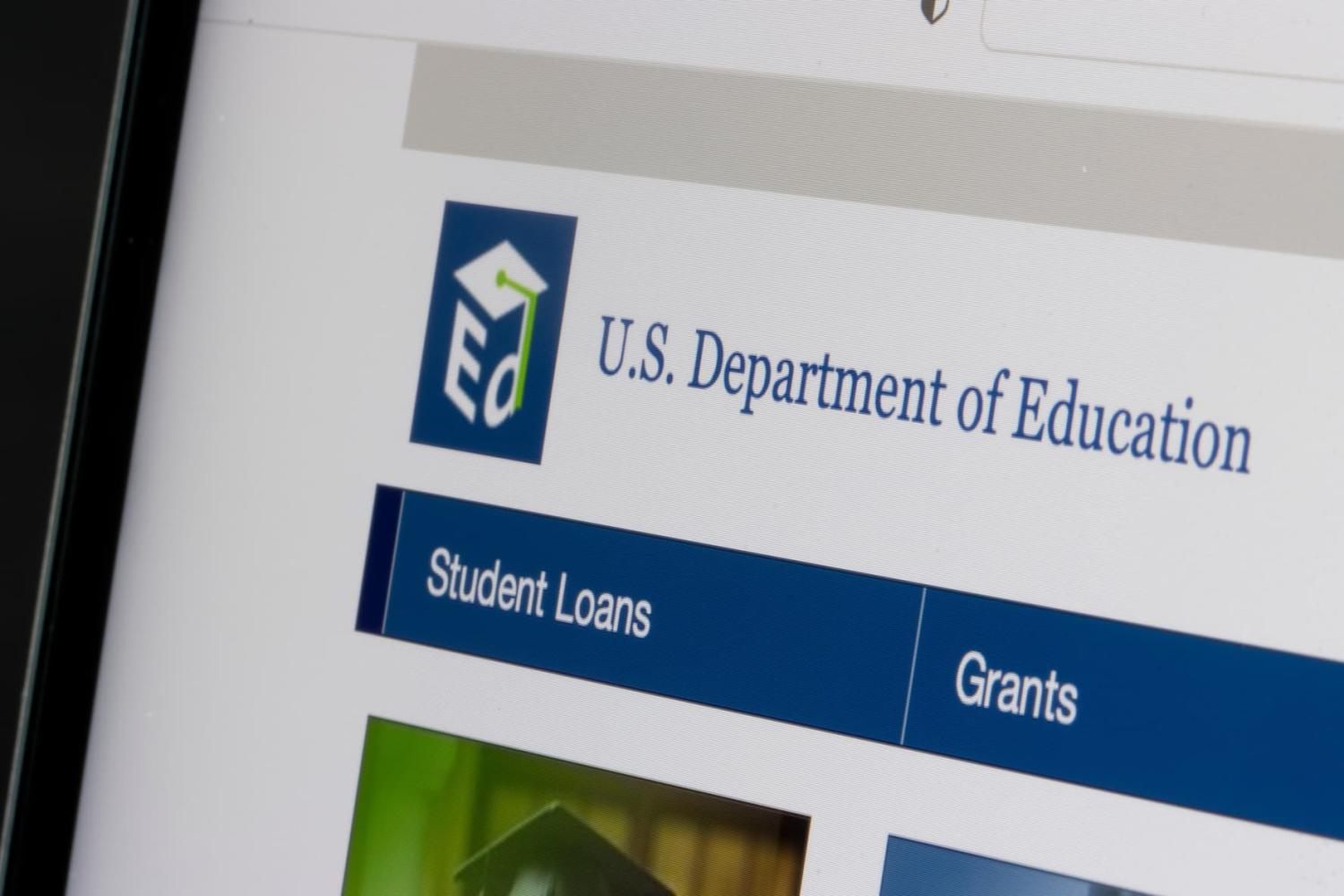Between the ongoing budget reconciliation process and President Trump’s FY 2026 budget request, federal financial aid is at risk. Provisions in the reconciliation bill would eliminate Pell Grant eligibility for millions of students, and the budget proposes eliminating or dramatically reducing Pell and other federal grant aid. Without robust federal funding for financial aid, states and students will scramble to fill in the gaps, with the end result being fewer opportunities to pursue higher education for the lowest income students.
How do federal programs help students pay for college?
The federal government runs three major grant programs for undergraduate students—the largest is the Pell Grant, which totaled $31 billion in aid in fiscal year 2023. Pell is supplemented by the smaller Federal Work Study (FWS) program ($1.2 billion appropriated in 2023-24) and the Federal Supplemental Educational Opportunity (FSEOG) program ($904,783,667 appropriated in 2023-24). Below I outline how each program currently operates and review the impacts of federal policy proposals on students and states.
Pell Grants
How it works: The Pell Grant program works as a federal voucher that lower-income college students can use to cover costs of attendance. Every eligible student receives a Pell Grant and around 6.5 million students received a Pell Grant in the 2023-24 academic year. Congress has chosen not to increase the maximum Pell Grant in recent annual appropriations, keeping it at $7,395 since the 2023-24 academic year. In 2022-23, about 61% of Pell Grant recipients had a family income less than $30,000.
Proposals: Let’s start by looking at the budget reconciliation process. The proposal as passed by the House makes significant changes to Pell Grant eligibility. First, it redefines full-time enrollment as completing 30 credit hours each academic year, with students completing fewer credits receiving prorated awards. Previously students completing 12 credits a semester were considered full-time. Second, it eliminates Pell Grant eligibility for students studying less than half-time. Analyses estimate that if students didn’t change their enrollment behaviors, 20% of current Pell recipients would completely lose eligibility due to the half-time provision. Another 28.5% of Pell students would no longer be considered full-time and would receive a reduced award. The National College Attainment Network estimated the proposed full-time definition would reduce the lowest-income students’ Pell Grants by about $1,500 per year (with smaller reductions for comparatively higher-income students currently receiving smaller Pell awards).
Many students do not have the flexibility to increase how many credits they take each semester, given responsibilities outside of school. About 20% of community college students are parents, and the top reasons students stop out from community college programs is because they have to work or feel they can no longer afford their programs. It’s true that we need more policy attention to reducing time-to-degree so students can complete their programs and enter the workforce sooner, but removing Pell eligibility won’t help increase college completion, especially for the most economically disadvantaged students. Additional financial resources for students and additional funding for colleges to offer high-quality student success services would be more effective tools to boost completion and encourage students to take more credits.
Then the president’s FY 2026 budget request came out. The budget calls for dramatically cutting Pell by $1,685, with a maximum award of $5,710 for the 2026-27 academic year—about a 23% reduction. This is an unprecedented cut to Pell, which has in recent history either increased or remained flat year-to-year in nominal terms (though it has effectively decreased once adjusting for inflation).
The budget request notes that cuts to annual Pell awards are necessary to combat a projected $2.7 billion program shortfall. It’s true that the program needs a cash infusion to ensure stability (and the budget reconciliation bill proposes doing so). But the Pell Grant program is the backbone of the U.S. financial aid system and requires more than triage to live up to its promise.
Federal support to make college more affordable for the lowest-income students shows a national commitment to social mobility and economic development. Some 40 states have set goals to increase the share of the population with a postsecondary credential, goals which cannot be achieved without providing financial support to low-income prospective students. These states recognize that college-educated workers earn more, pay more in taxes, and are less likely to participate in public assistance programs. If anything, federal policy should expand Pell Grant eligibility to increase college completion alongside needed investments in the long-term sustainability of the program.
Federal Supplemental Educational Opportunity Program (FSEOG)
How it works: FSEOG is a limited, fixed pool of funds allocated to institutions for them to disburse to supplement students’ aid packages. Federal regulations dictate those funds should first go to Pell recipients and then to non-Pell students with the lowest family incomes. Students can receive FSEOG awards between $100 and $4,000, but the average award is about $952. About 62% of dependent students receiving FSEOG have a family income less than $30,000.
Proposals: The skinny budget argued that colleges use FSEOG to “fund radical leftist ideology” and the full FY 2026 budget request proposes eliminating the program. This is political bluster—FSEOG does not fund specific programs or ideology. However, as the budget notes, the program is poorly targeted. Research shows that while selective private colleges enroll only a small number of Pell students, they receive an outsized share of FSEOG funds that might be better targeted to community colleges enrolling a larger share of lower-income students. Eliminating the program while concurrently increasing Pell could simplify aid disbursement for students, but that’s not what the administration is proposing. Cutting Pell while simultaneously cutting FSEOG adds up to a dramatic loss in aid available to the lowest-income college students and the institutions that serve them.
Federal Work Study (FWS)
How it works: FWS is a need-based fund matching program for undergraduate and graduate students where the government typically provides 75% of the wages a student receives from a part-time job and institutions or employers pay the remainder. FWS funds are less targeted to the lowest-income students, and only about 29% of dependent recipients come from families earning less than $30,000 a year.
Proposals: The skinny budget called FWS “a handout to woke universities” and proposed cutting $980 million from the program. The full FY 2026 budget request proposes shifting the cost-sharing allocation so the government only pays 25% of the wages, and schools or employers would be responsible for the remaining 75%. Like FSEOG, a large share of FWS dollars go to more advantaged institutions. FWS may be a poorly targeted program, but one of its main benefits is to provide students who would already be working with better employment opportunities. FWS jobs are much more likely to be on campus, reducing commuting costs, and are more likely to be related to students’ majors. FWS participation increases the likelihood students graduate on time and are employed after graduation, with larger effects for students at public colleges. As with FSEOG, one program improvement could be adjusting the allocation formula to direct more funds to institutions enrolling a larger share of low-income and Pell-eligible students who are most likely to benefit from the program.
Combined, FWS and FSEOG send a small but meaningful amount of financial aid to campuses in service of supporting college affordability. Below, our explorer highlights program allocations for the 2024-25 award year in each state, broken down by sector to highlight where gaps might emerge. For example, eliminating FSEOG would cut $4 million from Louisiana community colleges.
Where does this leave states?
State and local governments spent approximately $14.87 billion on college grants in fiscal year 2024 (and approximately three-fourths of state grant aid is need-based). Many of these state grant programs only kick in after a student applies federal aid to their tuition bill. As a result, a state promise to cover “full tuition and fees” may only end up costing a couple hundred dollars if a student receives the maximum Pell Grant and attends a lower-cost college. If students are eligible for smaller Pell Grants and FSEOG funds are eliminated, states with these “last dollar” programs would have to pay out larger grants in the short term and may have to modify their programs to ensure financial sustainability in the longer term. For example, in the Tennessee Promise program, only about 24% of recipients completed 15 credits/met the proposed new full-time enrollment definition, implying the majority of Promise students would see their Pell Grants reduced, leaving Tennessee taxpayers on the hook for the difference.
Do states have sufficient funds to cover larger awards for students who no longer receive the full Pell Grant? It seems unlikely, especially if reconciliation proposals to shift SNAP and Medicaid costs to the states also pass, further constraining state budgets. Will colleges be able to invest additional institutional aid to make up the gap? Again, that seems unlikely as institutions face a hydra of budget challenges, including declining domestic enrollment and threats to international enrollment alongside budget reconciliation proposals to enact costly risk sharing and higher endowment taxes.
Where does this leave students?
College leaders recently voiced concerns that reductions in grant aid would inevitably increase student borrowing, given the unlikely ability for states and colleges to fully meet lost aid. The federal investment in financial aid has long been a national commitment to ensuring that every student who would benefit from a college education is able to do so regardless of their income.
Colleges can be essential social mobility drivers, improving economic conditions for individual students and ensuring the U.S. economy has sufficiently trained workers for the jobs of the future. Evidence points to the need for additional, better-targeted aid and resources for students, not for less. Students already perceive college as unaffordable and despite recent reductions in net prices, college remains unaffordable for many low-income families.
If recent proposals go through, college will be even less affordable for the lowest-income students. In turn, they may choose to forego college altogether.
The Brookings Institution is committed to quality, independence, and impact.
We are supported by a diverse array of funders. In line with our values and policies, each Brookings publication represents the sole views of its author(s).







